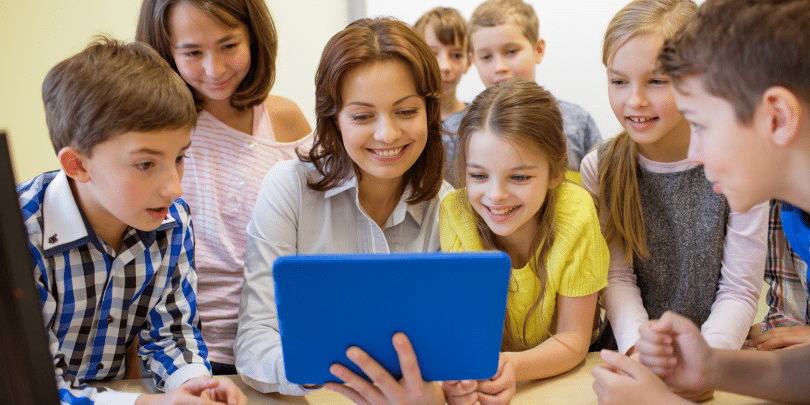Enhancing student engagement through tech

In the rapidly evolving landscape of education, integrating technology in teaching methods has emerged as a vital strategy for fostering student engagement. This blog post delves into how educators can leverage digital tools to enhance learning experiences and maintain high levels of interest among learners.
With the aim to not just inform but also inspire, we explore various tech-enabled approaches that promise to transform the traditional classroom into a dynamic learning environment. Through this exploration, we aim to arm teachers with the knowledge and tools necessary to captivate and educate the digital-age student.
Empowering Educators with Technology
The journey towards enhanced engagement begins with empowering educators. By familiarizing themselves with the latest educational technology, teachers can create more interactive and inclusive lessons. From interactive whiteboards to educational apps, the right tools can cater to diverse learning styles and needs.
Utilizing multimedia presentations or online quizzes can transform a routine lesson into an exciting learning experience. Moreover, digital platforms offer teachers insights into student performance, enabling personalized feedback and support.
Yet, the relationship between technology and engagement isn't one-size-fits-all. Teachers must critically assess each tool's potential to contribute to their educational objectives.
Creating Collaborative Classrooms
Technology paves the way for collaborative learning, breaking the traditional classroom's physical boundaries. Digital tools like discussion forums, group chats, and project management apps encourage participation from all students, including the more introverted ones.
Projects that utilize technology to enable students to collaborate in real-time, regardless of their location, not only teach them subject matter but also valuable skills in teamwork and communication. This collaborative approach enhances engagement by making learning a shared experience.
However, it is crucial to establish clear guidelines and expectations for digital collaboration to ensure a productive and respectful online environment.
Incorporating Gamification
Gamification, or the integration of game-design elements in non-game contexts, has shown to significantly boost engagement. Through gamification, educators can make learning more interactive and competitive in a healthy way.
Badges, leaderboards, and challenges can motivate students to engage deeply with the material and with each other. These elements appeal to the innate human desire for achievement and recognition.
Effectively designed educational games can offer an immersive learning experience, making difficult concepts easier to understand and retain.
Leveraging Virtual and Augmented Reality
Virtual Reality (VR) and Augmented Reality (AR) offer unprecedented opportunities for immersive learning. These technologies can transport students to different times and places, provide hands-on experience with complex subjects, and enhance understanding through interactive simulations.
Applications of VR and AR range from virtual field trips to anatomy education, where students can explore the human body in 3D. Such experiences are not only engaging but also highly educational, providing learners with a deeper, more nuanced understanding of the lesson content.
Maximizing the Potential of Personal Devices
In an era where smartphones and tablets are ubiquitous, embracing these personal devices as educational tools can be a game-changer for engagement. Through 'Bring Your Own Device' (BYOD) policies or school-supplied tablets, technology becomes a personal learning assistant.
Educational apps and e-books make learning resources more accessible and interactive, allowing students to learn at their own pace and in their own style. This personalization of learning experiences is key to keeping students engaged and motivated.
Monitoring and Enhancing Engagement with Analytics
Technology also offers powerful analytics tools that help educators monitor engagement levels and identify areas where students may be struggling. By analyzing data on how students interact with digital learning resources, teachers can adapt their teaching strategies in real time.
This proactive approach ensures that all students remain engaged and supported throughout their learning journey. Furthermore, feedback collected through digital platforms can guide the continuous improvement of teaching methods and materials.
Conclusion
Enhancing student engagement through technology is not just about using the latest gadgets; it's about creating a more interactive, inclusive, and immersive learning environment. By thoughtfully integrating tech into their teaching, educators can captivate their students’ attention, cater to their diverse needs, and prepare them for a digital future. Let us embrace these opportunities to transform educational experiences and ignite a lifelong passion for learning in all students.
Remember, the goal is to enhance engagement – to make learning not only more efficient but also more enjoyable for students. With the strategies discussed above, educators can move closer to achieving this goal, paving the way for a brighter educational future.

Related